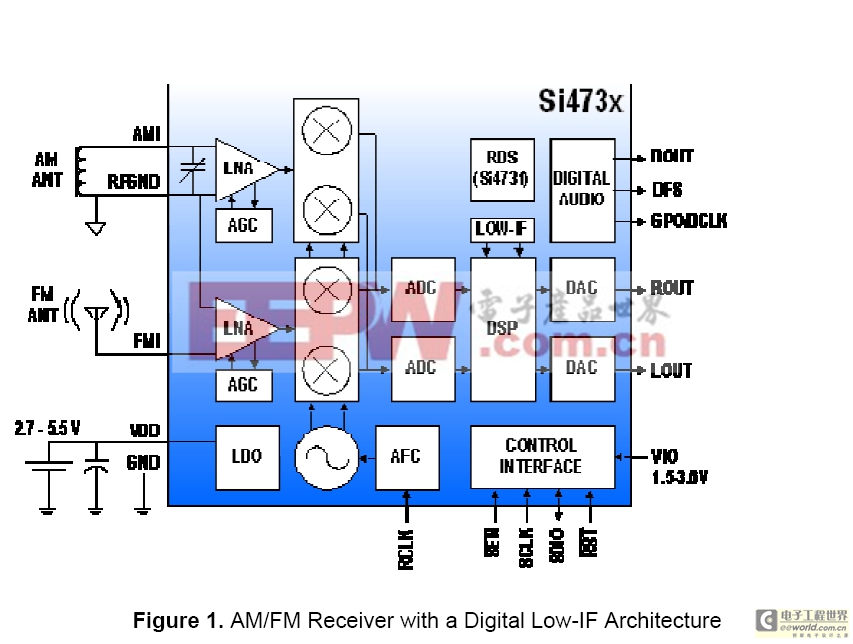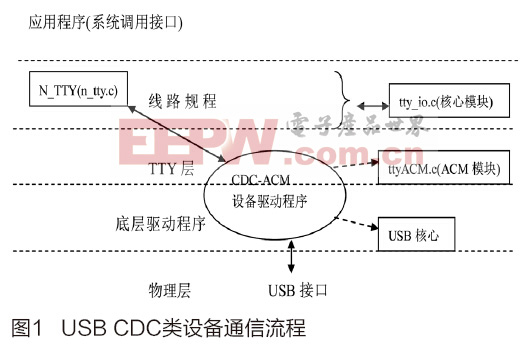如何给便携式设备添加音乐和数据传输功能
本文讲解了如何将音乐和AM广播功能添加到一部全功能的便携式设备中,而不会扩大产品的外形大小,同时保持较低的功耗需求。
……
英文原文:
How To: Adding Music and Data Transmission to Portable Devices
Wade Gillham
Silicon Laboratories Inc.
Portable devices have become one of main sources of demand for the semiconductor industry. The high volumes of these products are driving significant semiconductor innovation to add new features in a very small footprint. This also requires low power dissipation. One of the emerging trends in portable devices is offering music along with data and voice transmissions. Digital media is becoming increasingly popular, but we shouldn’t forget about the demand for and popularity of AM and FM radio. The challenge for semiconductor suppliers is to enable these popular features cost effectively and in a very small footprint. AM radio in particular is very challenging due to the large antenna required. As are result, for very small, battery powered, multi-function portable devices do not have a large penetration of AM radio. AM radio is extremely common in around the world and therefore it is well understood to be a popular potential feature, but how does a system designer overcome the challenges?
A major innovation in AM radio for portable devices, particularly cell phones is the use of a digital low-IF architecture that allows many analog functions to be replaced with digital signal processing (DSP). Functions implemented with DSP techniques include selectivity filtering, adjustable channel bandwidth filters, FM and AM demodulation, stereo decoding, signal strength measurement, signal-to-noise measurements, automatic gain control (AGC), automatic frequency control (AFC), RDS/RBDS decoding, audio processing including volume control, soft mute and stereo blend. The high integration level and digital-intensive architecture provides many customer benefits, including a reduction in the bill of materials (BOM) and a reduction in board space by more than 95 percent when compared with traditional AM/FM receivers.
This high level of integration allows a system designer to add AM capability to a full featured portable device without having to make compromises on the size of their end product.

By leveraging new, innovative architectures, AM radio footprint can be reduced from more than 45 components and 1,000 mm2 to a single chip and two external components requiring only 15 mm2 of board space. This tiny footprint and low power requirements make it possible to offer an AM/FM receiver into mobile phones and MP3 players. But the designer may be asking the question, what about the antenna?
A flexible design enables the use of a wide-variety of ferrite antenna options. Historically, it was thought that low cost antennas would result in poor reception and sound quality, however, the high performance enabled in a digital low-if architecture is less reliant on a strong antenna and enables the use of very small, low cost AM antennas while still delivering similar or better sound quality than competing solutions that require a much larger and more expensive antenna. The ability to use a miniature AM ferrite antenna makes it truly possible to add AM radio to any handset or MP3 player.
Another challenge for the portable device maker is that complex designs often reduce yields, which can be very costly in consumer products. A digital-centric architecture is also helpful in improving manufacturability. A digital approach eliminates the need for manual alignment, which can take up to several minutes per device in the manufacturing process. Traditional AM/FM solutions require multiple stages of hand-tuning that adds cost, limits production flow and introduces performance variability across products. The elimination of any hand tuning during the manufacturing process dramatically reduces the complexity, cost and risk associated with adding FM/AM to the portable device.
The reduced bill of materials of course, also reduces complexity in manufacturing and improves yields. And, a built-in DSP offloads host resources and speeds software development by providing integrated digital tuning, AM/FM decoding, seek, soft-mute and FM stereo blend. This also allows for pre-testing. Older solutions cannot be tested without the IC in addition to 45+ extra components on the board, thus leading to lower yields and increased costs.
Ultimately, the end user does not care what type of antenna was used or what type of architecture the radio has, they just want a small, sexy device that sounds good. The ability to offer good quality reception and added features like RDS decoding, is very important to the end user experience.
RDS offers useful digital data related to both FM broadcast and traffic messaging. Cell phone operators, portable media players and navigational device OEMs can use this data to drive new usage models and new revenue. Consumers have grown accustomed to seeing information displayed about the audio they are hearing, such as song name, artist and album, or program name, analyst and program commentary, and portable AM/FM receivers have not historically been able to provide this feature. Therefore, adding the visual element to the AM/FM radio broadcast experience is a good way to differentiate a portable device. But, integrating an RDS-capable AM/FM receiver into devices that are becoming progressively smaller has various challenges.
The Radio Data System (RDS) provides a way device manufacturers can incorporate display functionality into AM/FM broadcast products. RDS is digital data broadcast on a sub-carrier to the AM/FM signal and typically contains information relevant to the tuned channel and the broadcast programming in process. RDS is also used to carry traffic messaging (TMC) regarding road conditions and delays in a geographic area. TMC is typically loaded into the broadcast network by an organized series of reporting mechanisms including road-side cameras, emergency personnel, driver call-ins, and construction information. Makers of GPS navigational devices leverage TMC information to identify blockages and chart paths around them, allowing users to benefit from real-time information coupled with the less dynamic regional maps used by GPS devices.
Traditionally, analog radio solutions have too many components and limited programmability, making the addition of RDS too challenging. With limited memory and only half of the four available RDS blocks in an RDS group, the host processor must clear the FM receiver’s RDS memory buffer before it is able to decode and present the second half of the RDS group. This process requires complex host processor statemachine programs to poll and parse the constant stream of RDS data presented, consuming MIPS and power in the process.
New digital solutions typically offer more on-chip processing and larger memories, requiring much less interaction and processing from the host. In some cases, digital solutions have decreased the overall size of the host software for an analog solution by over 75 percent, resulting in free host memory for other applications or cost savings.
Digital solutions are able to maintain a high-level of performance while integrating advanced RDS pre-processing for simple programming at excellent cost levels. Ideal RDS solutions also support all RDS block error correction and information, requiring very little host processor work and far less complex host software.
As portable devices become more multi-functional, smaller and more central to the consumers’ communications and entertainment experience, the ability to add popular features like AM and FM radio will be important for portable device makers. It is up to the semiconductor supplier to overcome historical challenges with integrating complex, analog-centric features. Innovation in digital architectures can completely change the economics of adding these features and make it simple to design, more reliable to manufacture, more cost effective, and retain the user experience.

加入微信
获取电子行业最新资讯
搜索微信公众号:EEPW
或用微信扫描左侧二维码
